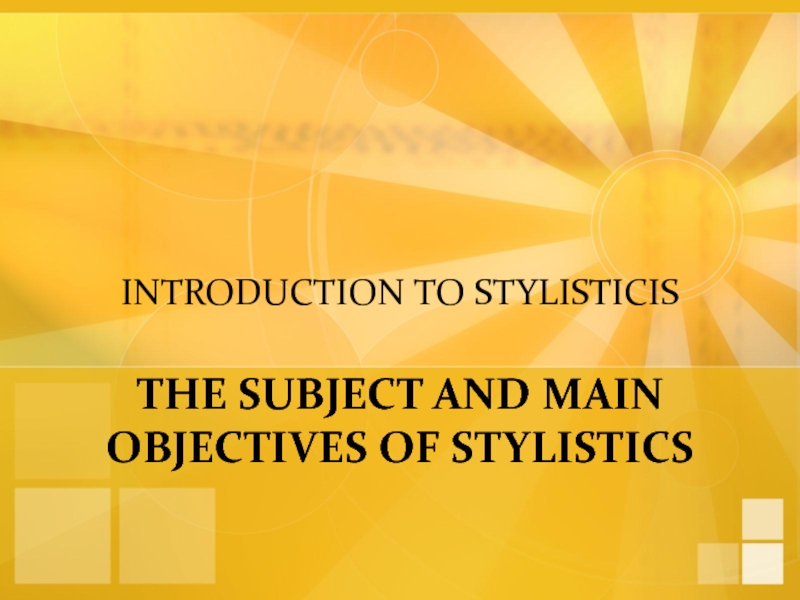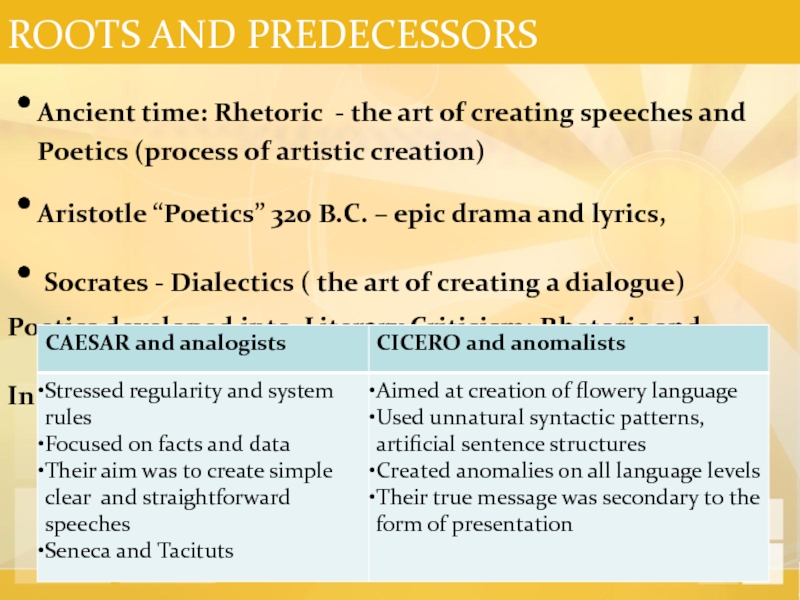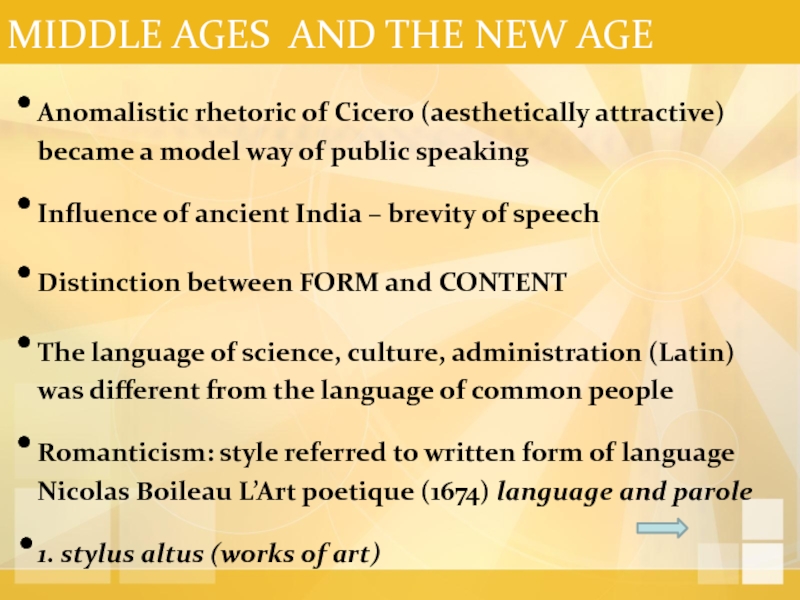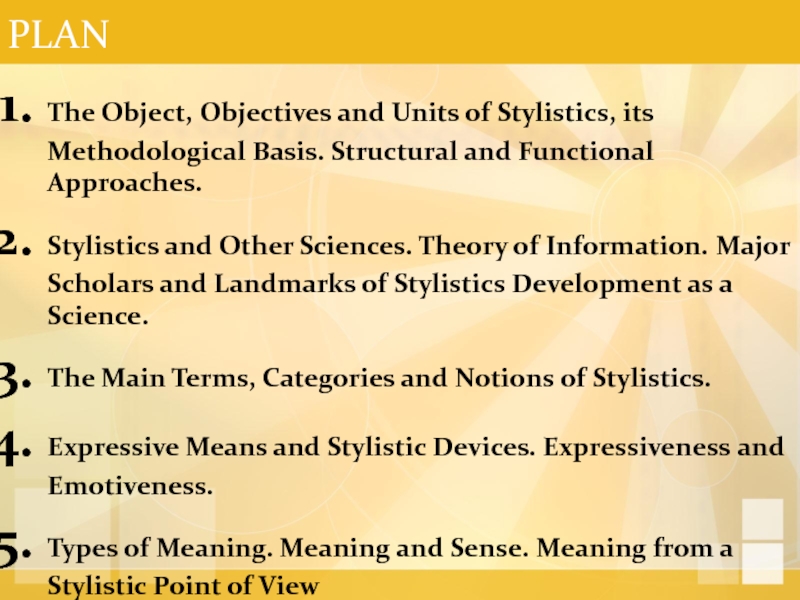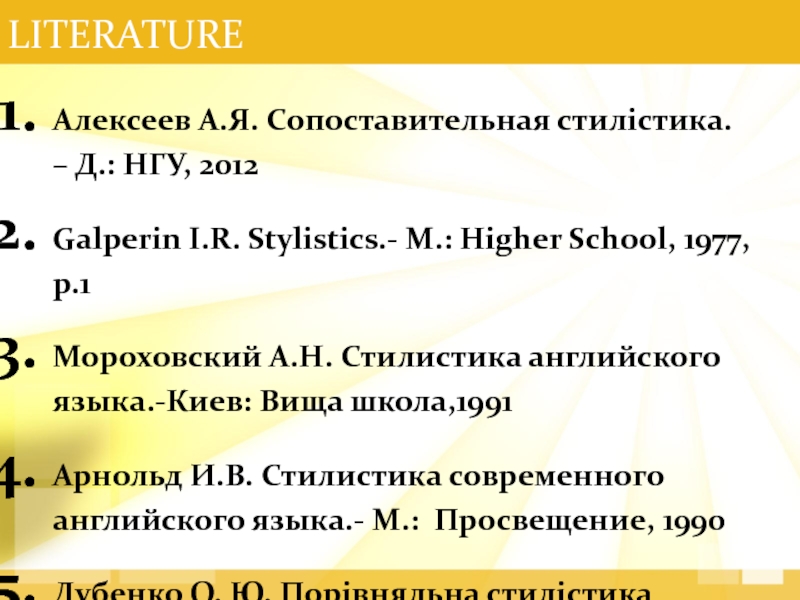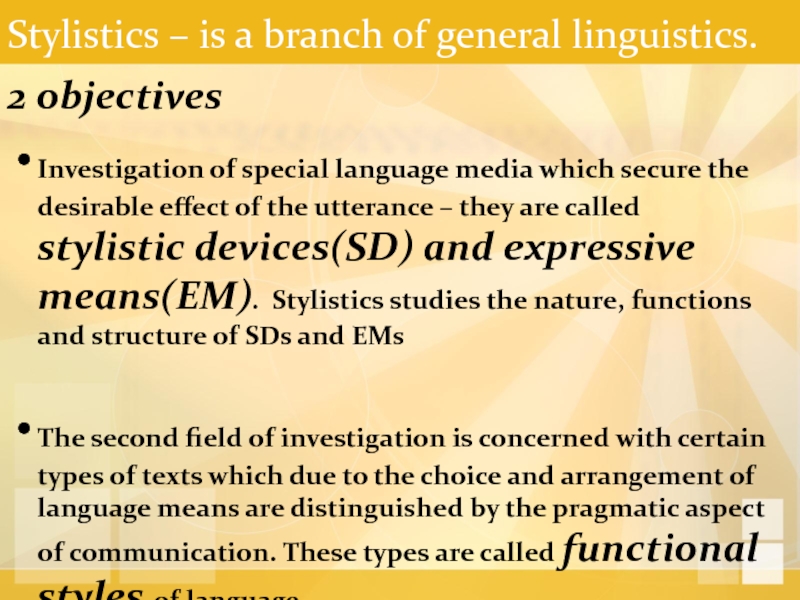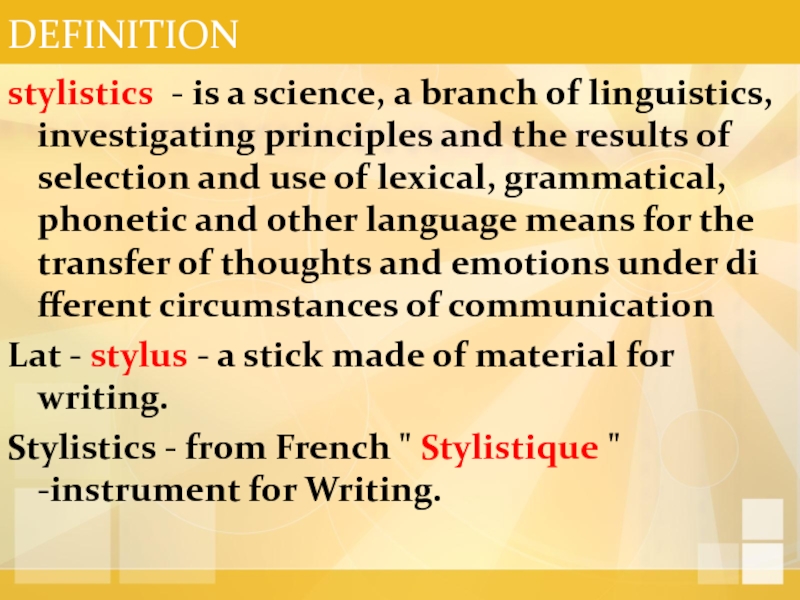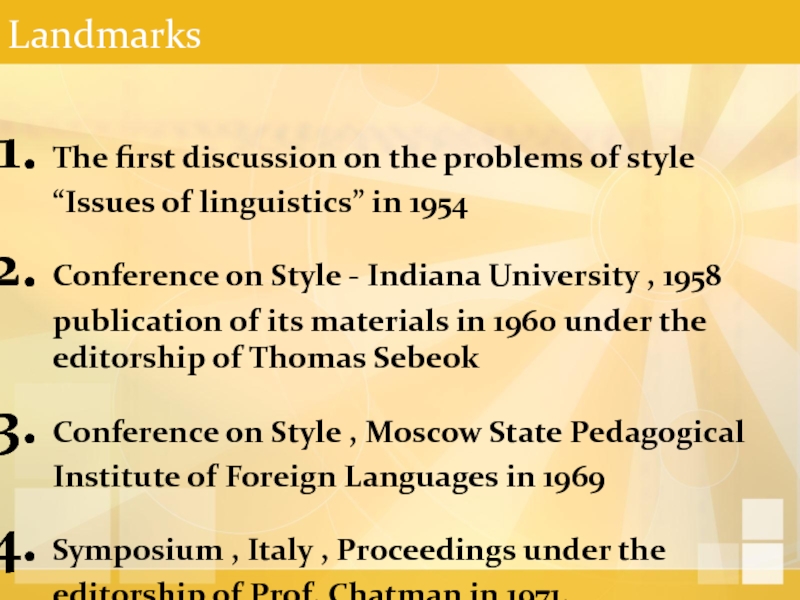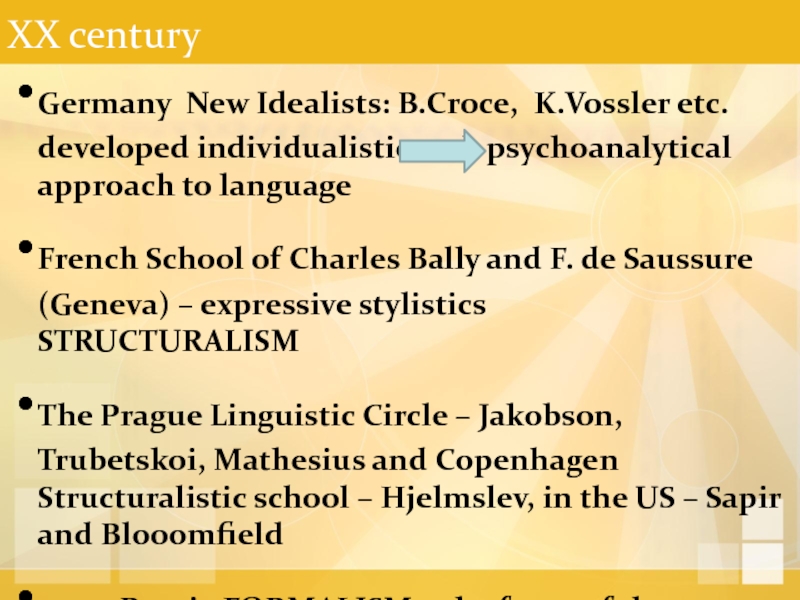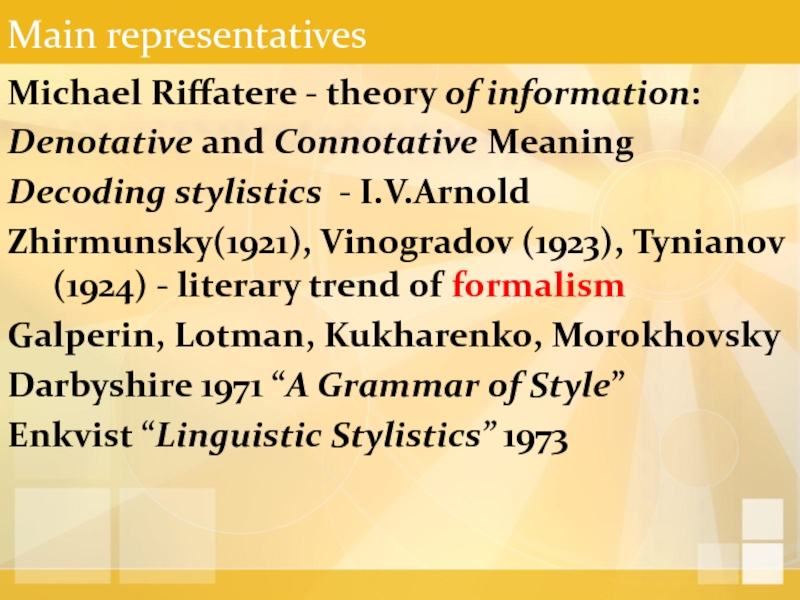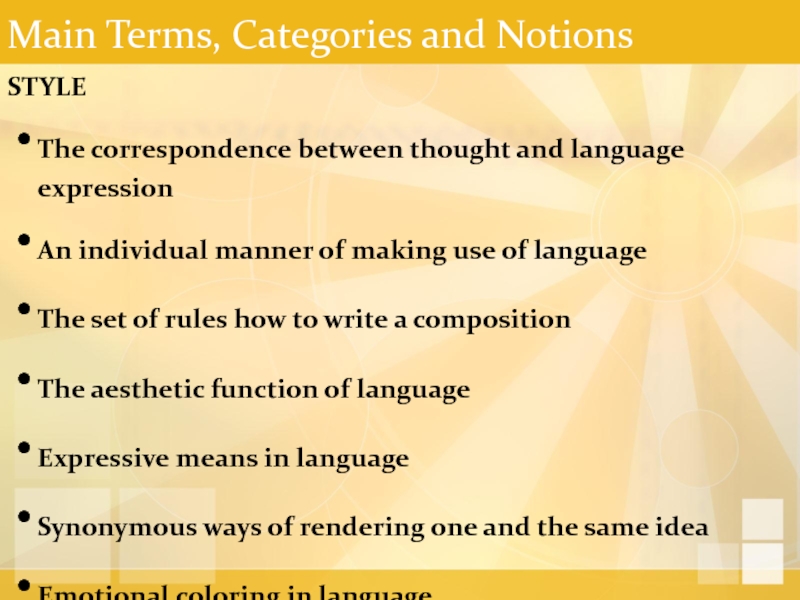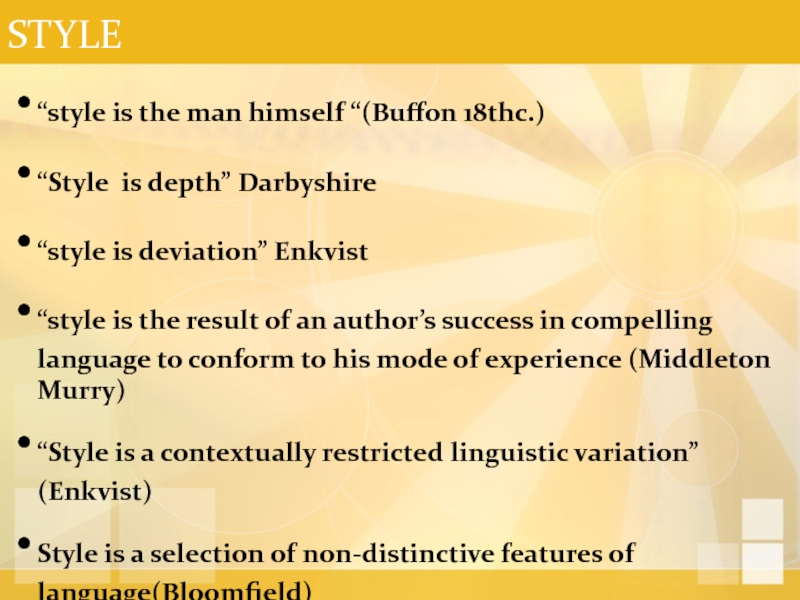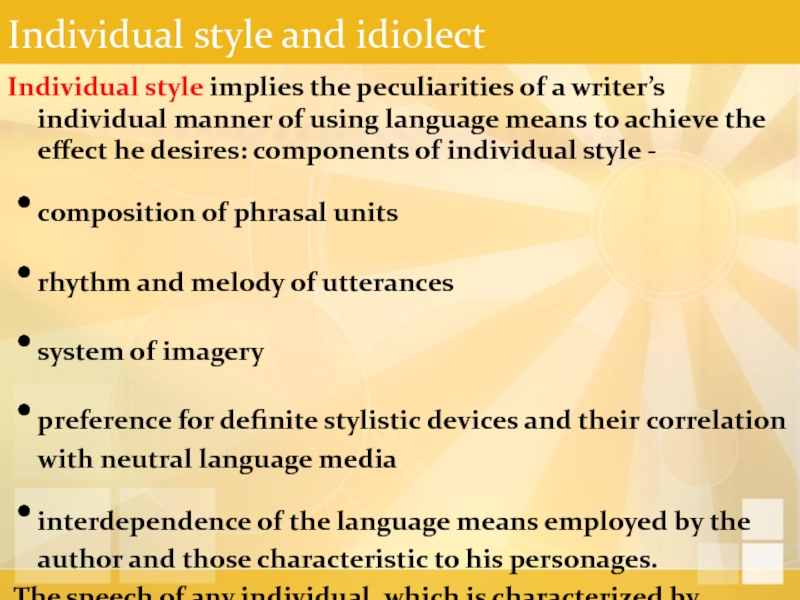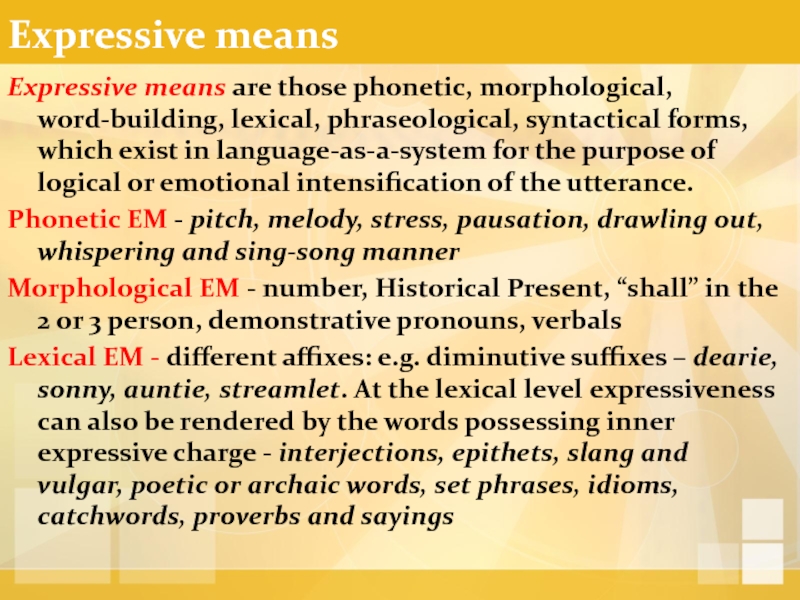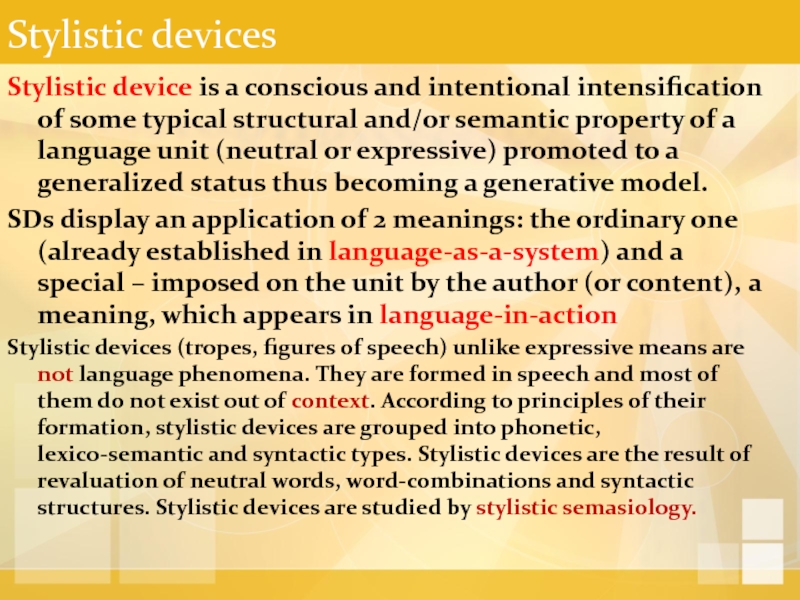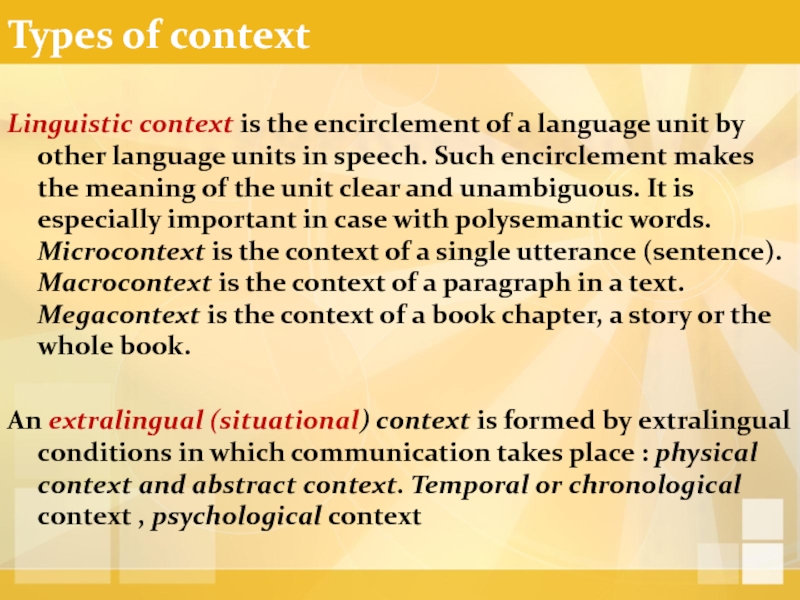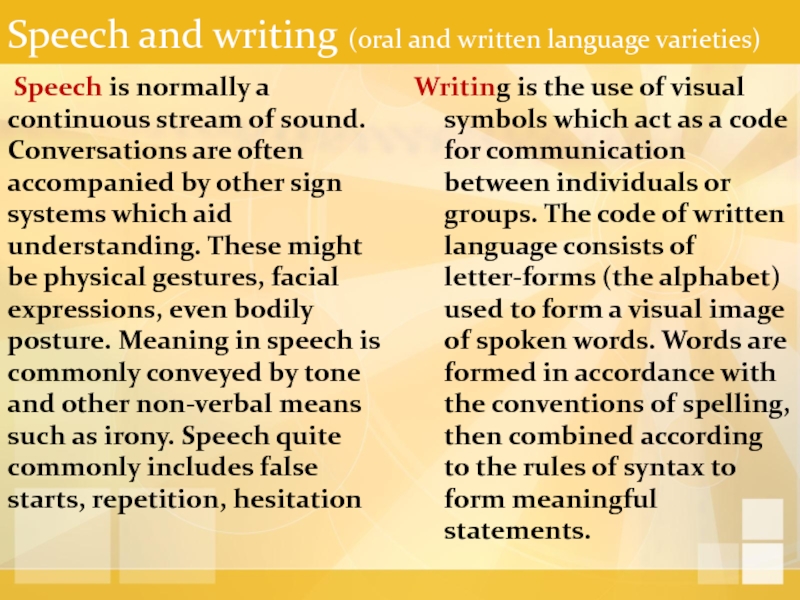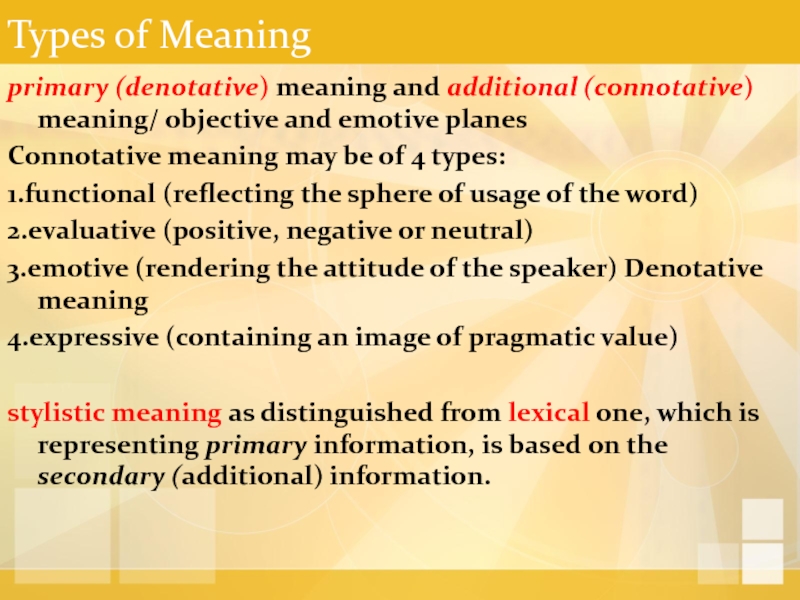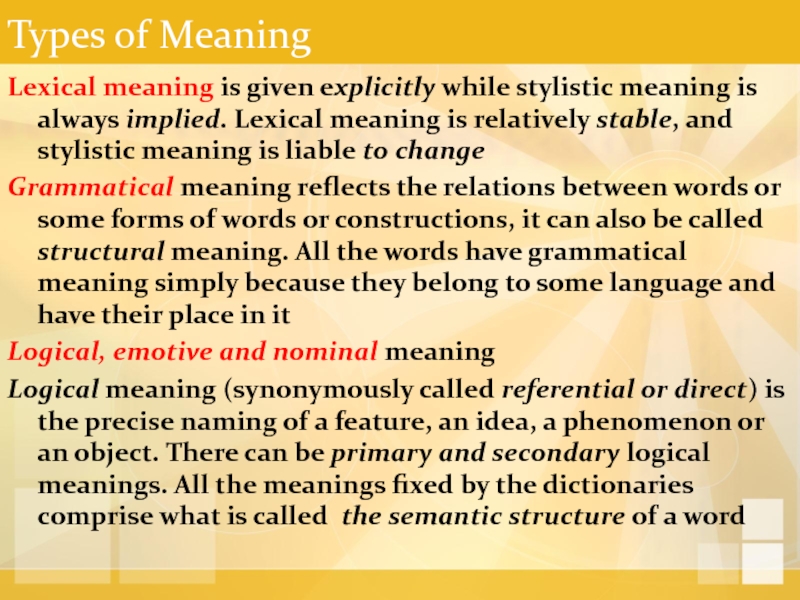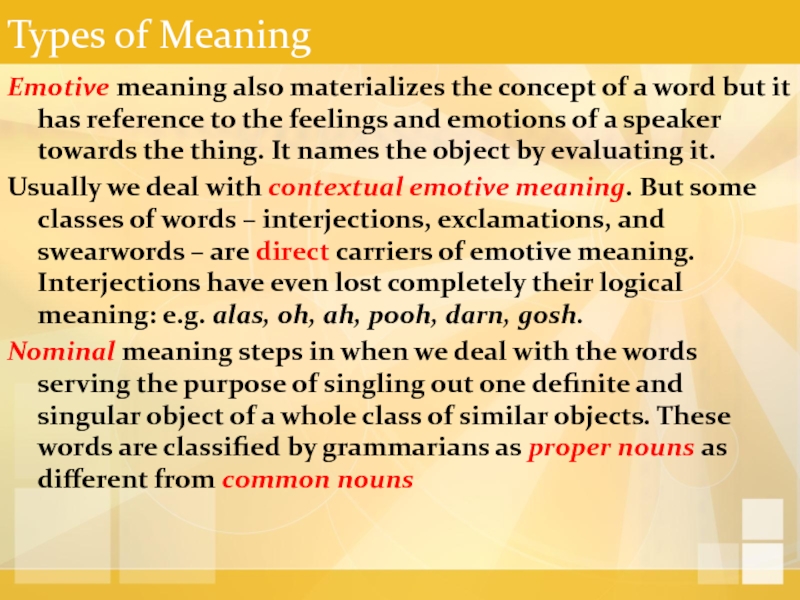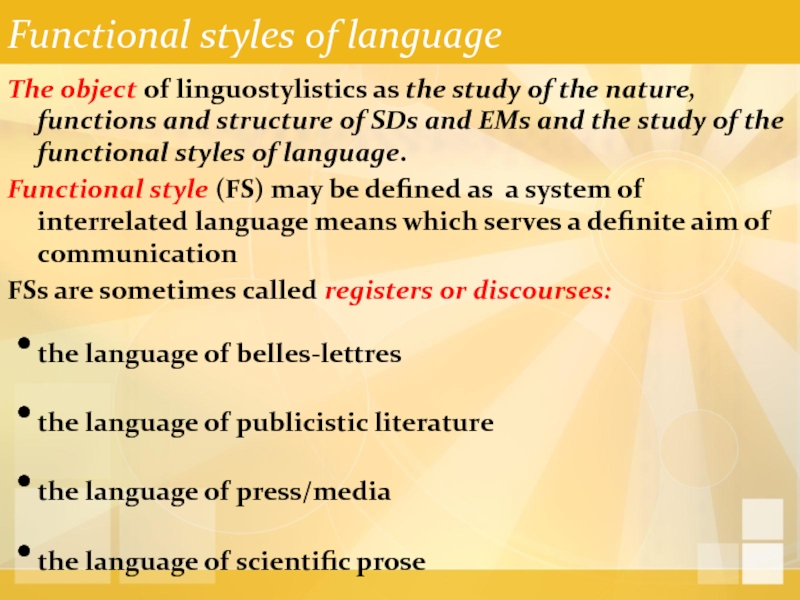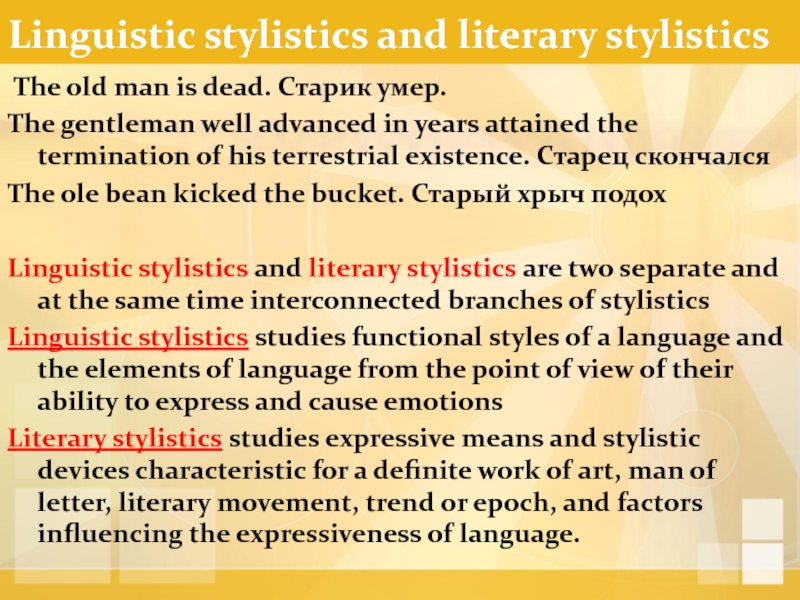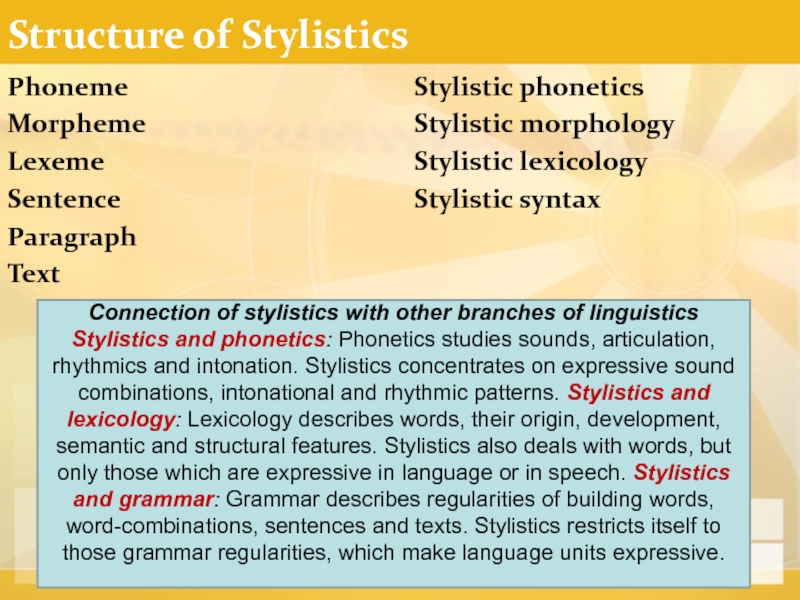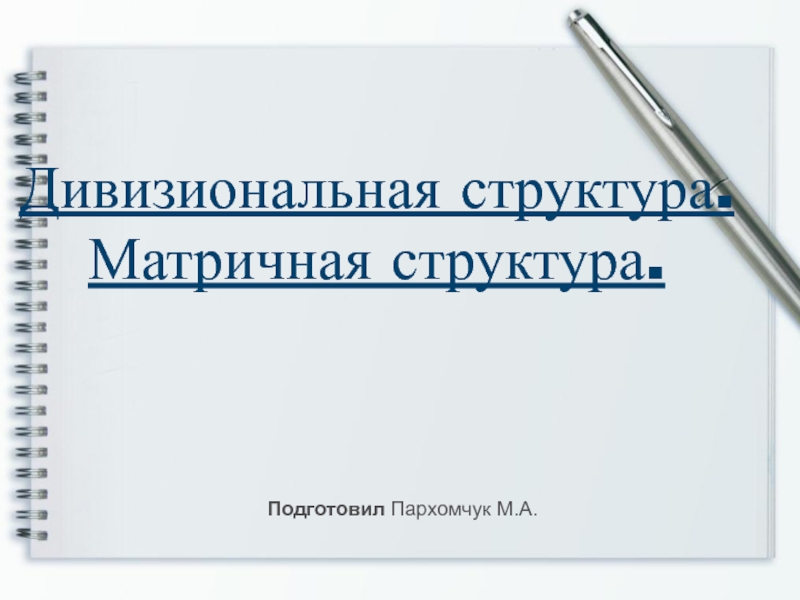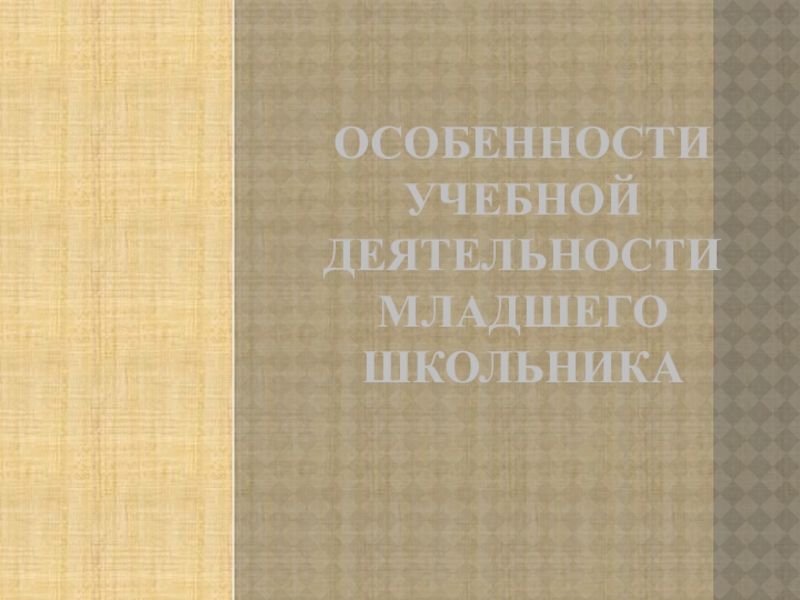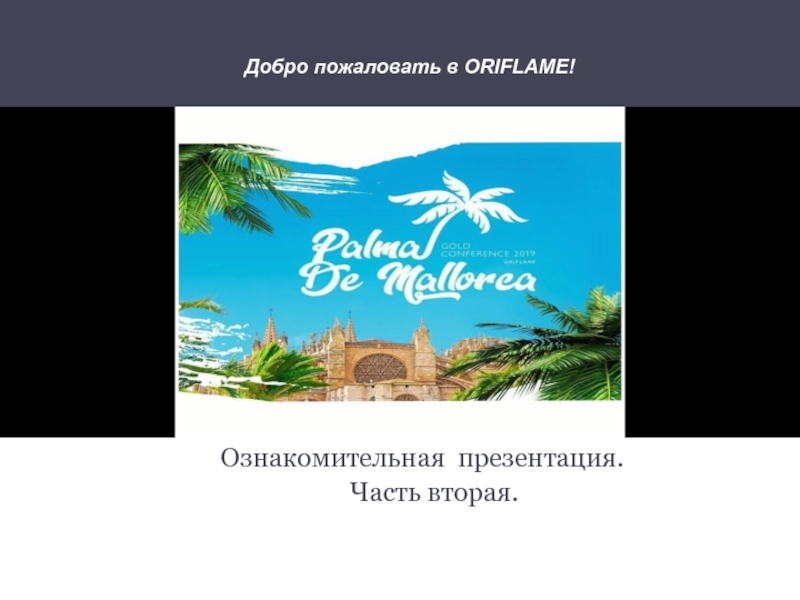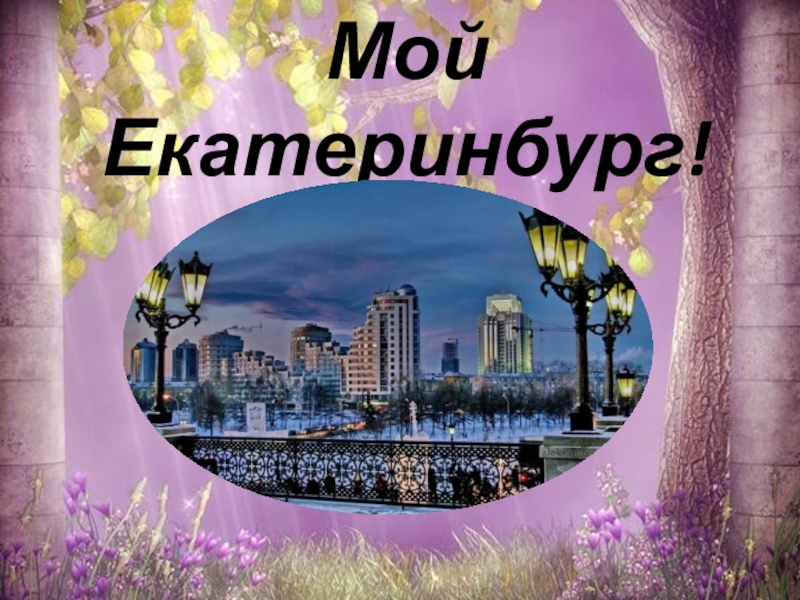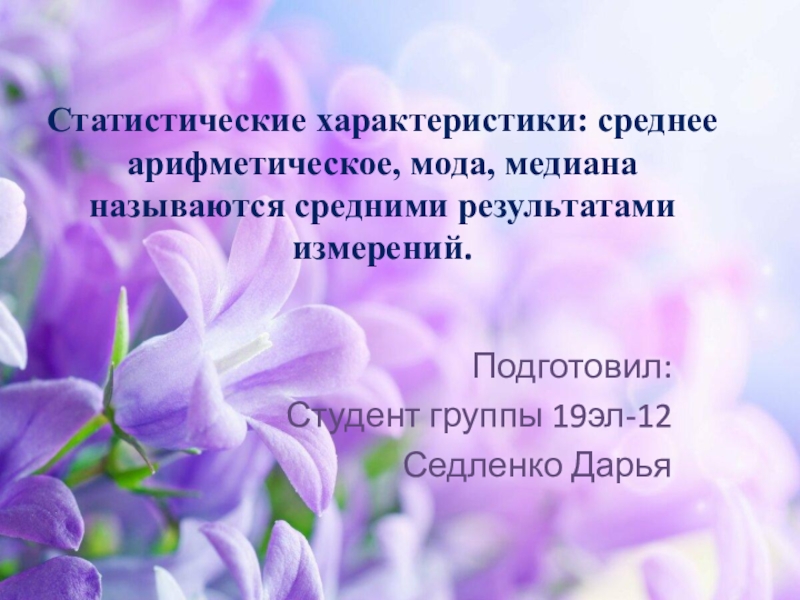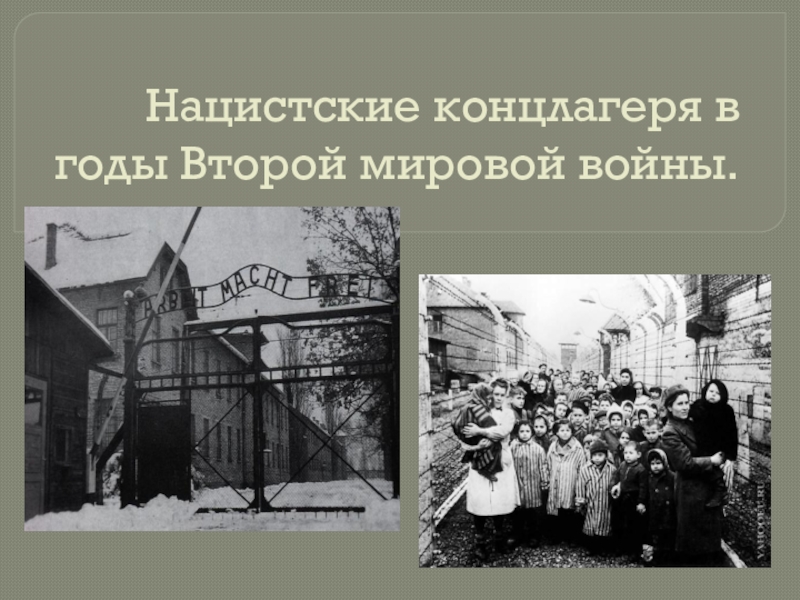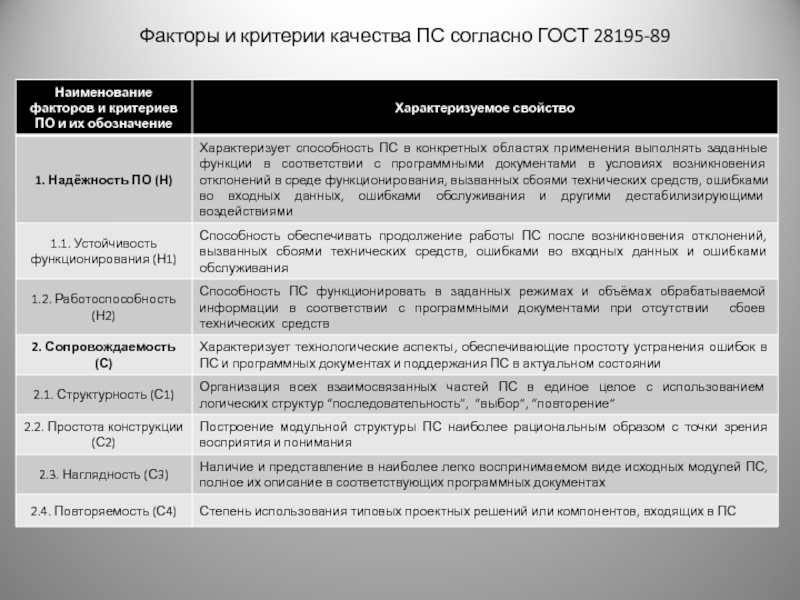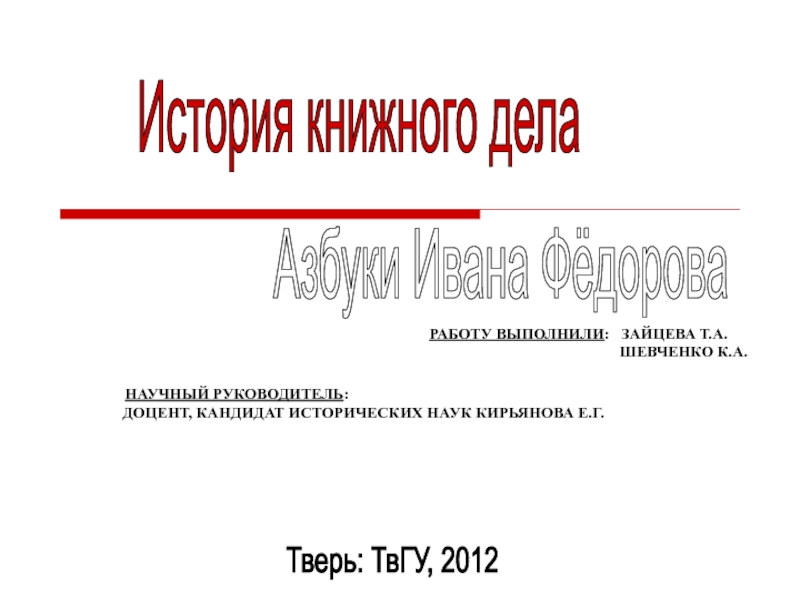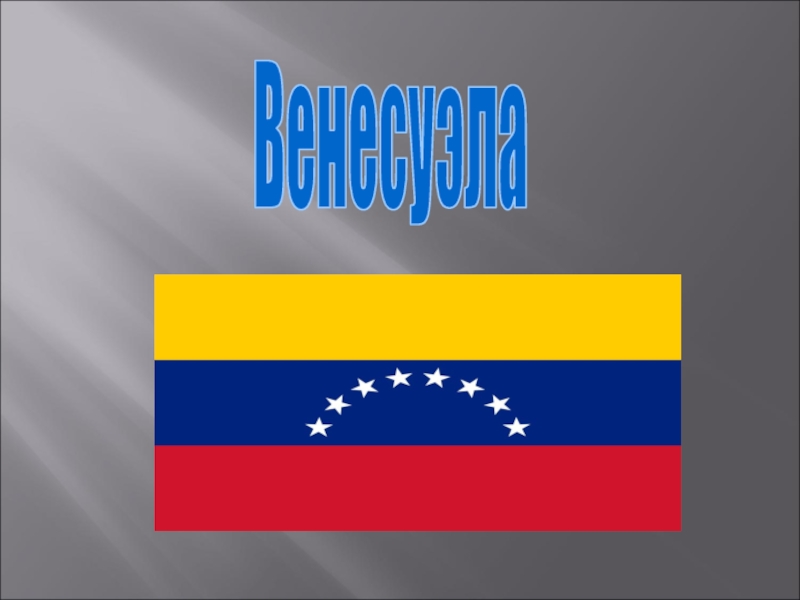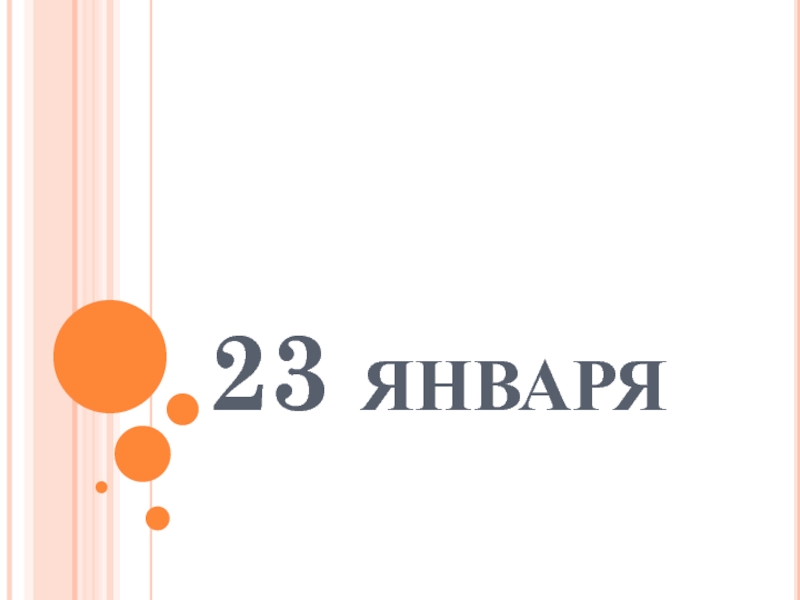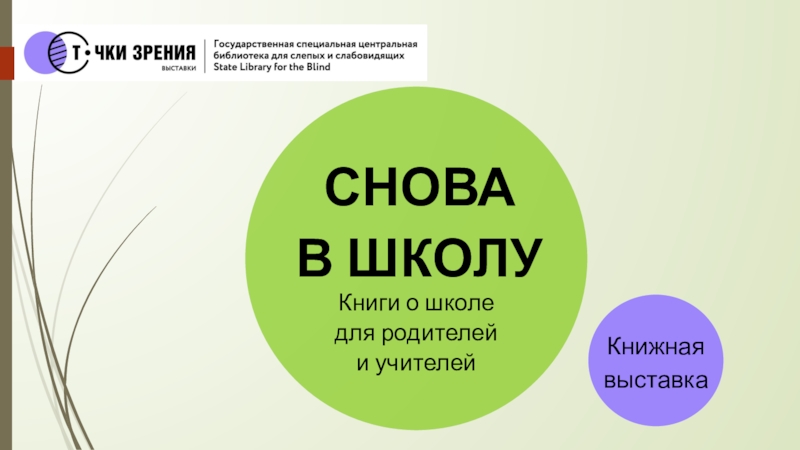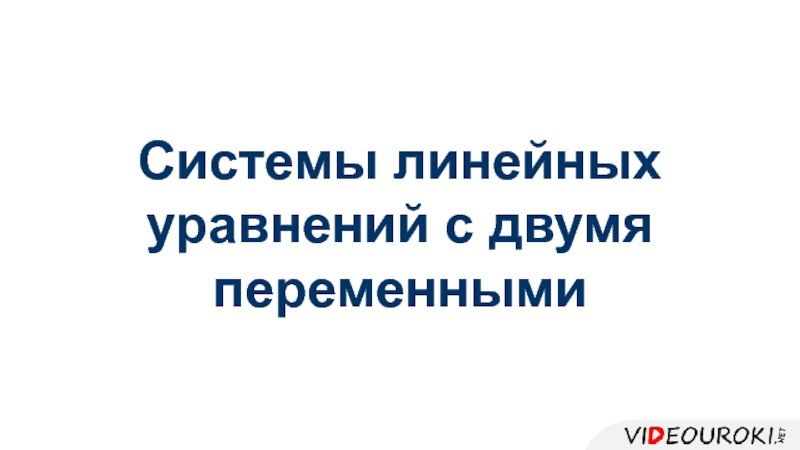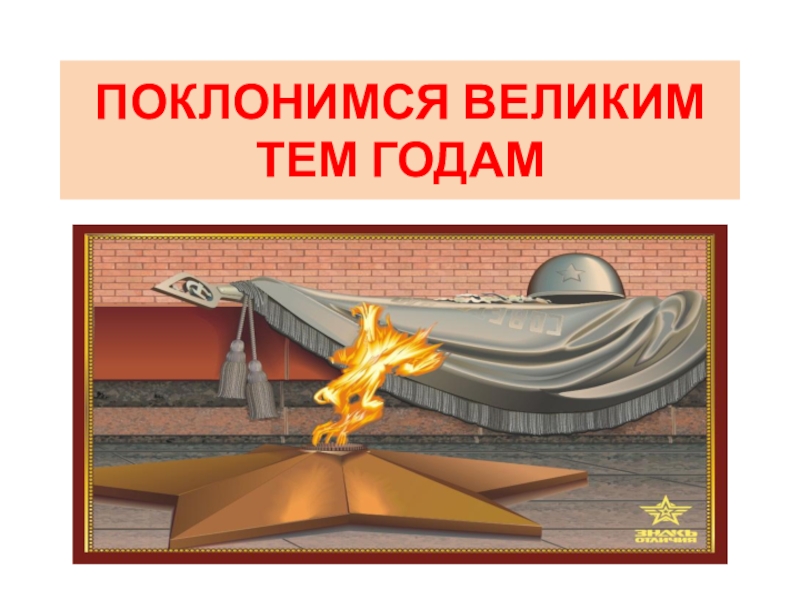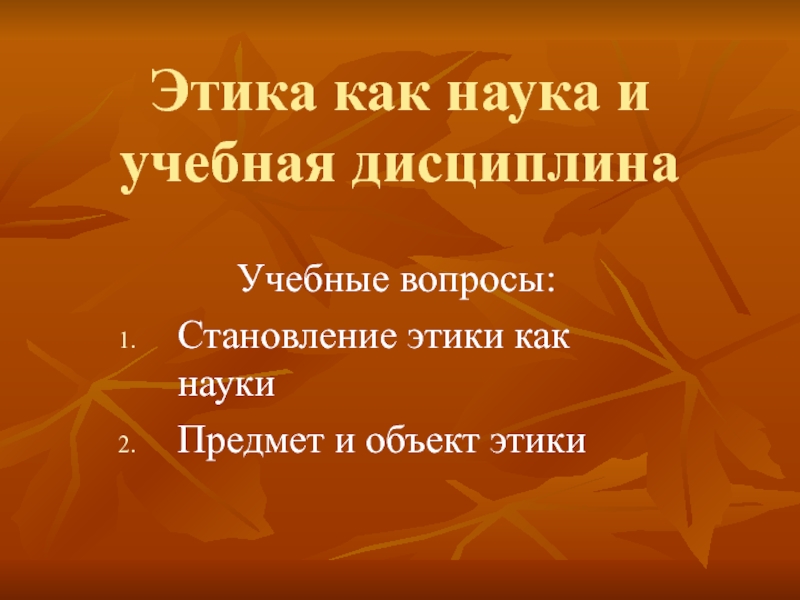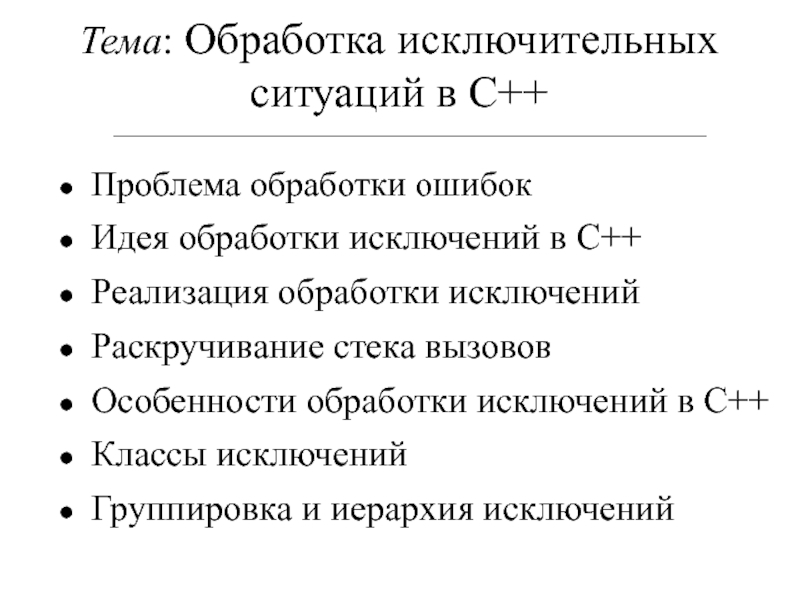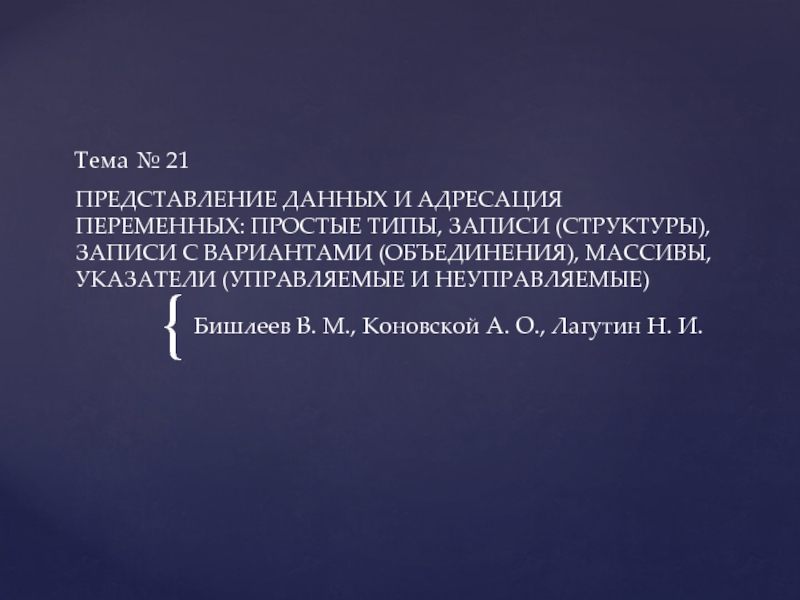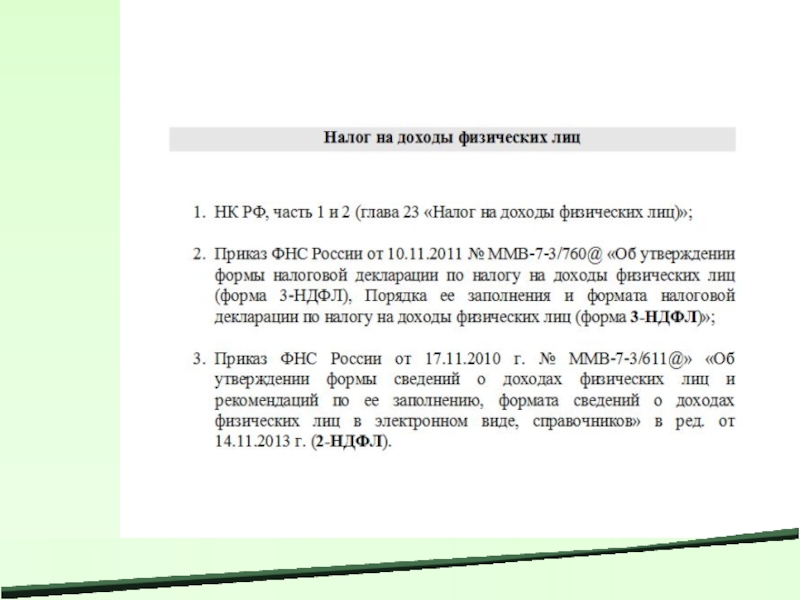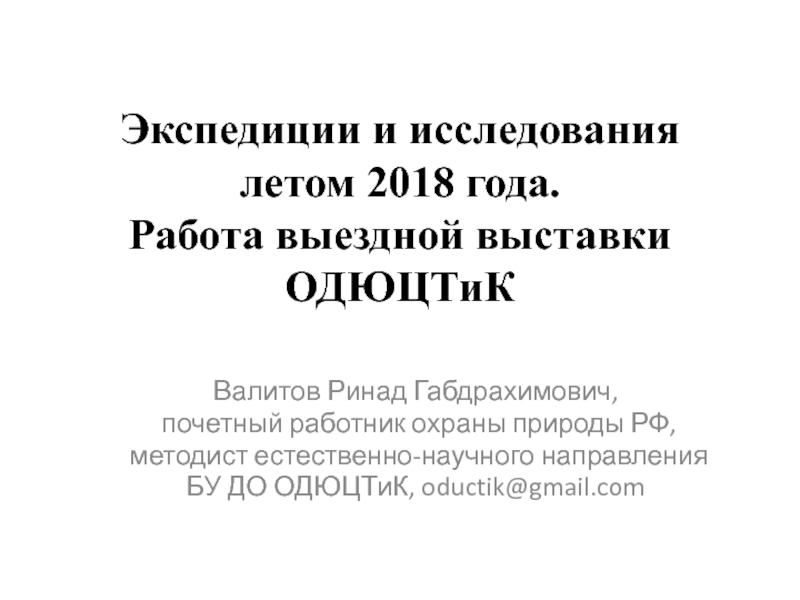Слайд 1INTRODUCTION TO STYLISTICIS
THE SUBJECT AND MAIN OBJECTIVES OF STYLISTICS
Слайд 2ROOTS AND PREDECESSORS
Ancient time: Rhetoric - the art of creating
speeches and Poetics (process of artistic creation)
Aristotle “Poetics” 320
B.C. – epic drama and lyrics,
Socrates - Dialectics ( the art of creating a dialogue)
Poetics developed into Literary Criticism; Rhetoric and Dialectics – into Stylistics
In ancient Rome:
Слайд 3MIDDLE AGES AND THE NEW AGE
Anomalistic rhetoric of Cicero (aesthetically
attractive) became a model way of public speaking
Influence of ancient
India – brevity of speech
Distinction between FORM and CONTENT
The language of science, culture, administration (Latin) was different from the language of common people
Romanticism: style referred to written form of language Nicolas Boileau L’Art poetique (1674) language and parole
1. stylus altus (works of art)
2. stylus mediocris (the style of high society)
3. stylus humilis (the style of low society and comedies)
19 century W.von Humboldt “ Uber die Verschiedenheit des menschlichen Sprachbaues..” functional styles Prague Linguistic Circle (1926)
Слайд 4PLAN
The Object, Objectives and Units of Stylistics, its Methodological Basis.
Structural and Functional Approaches.
Stylistics and Other Sciences. Theory of Information.
Major Scholars and Landmarks of Stylistics Development as a Science.
The Main Terms, Categories and Notions of Stylistics.
Expressive Means and Stylistic Devices. Expressiveness and Emotiveness.
Types of Meaning. Meaning and Sense. Meaning from a Stylistic Point of View
Functional styles and varieties of a language
Слайд 5LITERATURE
Алексеев А.Я. Сопоставительная стилістика. – Д.: НГУ, 2012
Galperin I.R. Stylistics.-
M.: Higher School, 1977, p.1
Мороховский А.Н. Стилистика английского языка.-Киев: Вища
школа,1991
Арнольд И.В. Стилистика современного английского языка.- М.: Просвещение, 1990
Дубенко О. Ю. Порівняльна стилістика англійської та української мов. – Вінниця: Нова книга, 2005
Єфімов Л.П. Стилістика англійської мови. – Вінниця: Нова книга, 2004
Слайд 6
Stylistics – is a branch of general linguistics.
2 objectives
Investigation of
special language media which secure the desirable effect of the
utterance – they are called stylistic devices(SD) and expressive means(EM). Stylistics studies the nature, functions and structure of SDs and EMs
The second field of investigation is concerned with certain types of texts which due to the choice and arrangement of language means are distinguished by the pragmatic aspect of communication. These types are called functional styles of language.
Слайд 7DEFINITION
stylistics - is a science, a branch of linguistics, investigating
principles and the results of selection and use of lexical,
grammatical, phonetic and other language means for the transfer of thoughts and emotions under di fferent circumstances of communication
Lat - stylus - a stick made of material for writing.
Stylistics - from French " Stylistique " -instrument for Writing.
Слайд 8Landmarks
The first discussion on the problems of style “Issues of
linguistics” in 1954
Conference on Style - Indiana University , 1958
publication of its materials in 1960 under the editorship of Thomas Sebeok
Conference on Style , Moscow State Pedagogical Institute of Foreign Languages in 1969
Symposium , Italy , Proceedings under the editorship of Prof. Chatman in 1971.
American journals , Illinois University “Style” and “Language and Style”.
Слайд 9XX century
Germany New Idealists: B.Croce, K.Vossler etc. developed individualistic and
psychoanalytical approach to language
French School of Charles Bally and F.
de Saussure (Geneva) – expressive stylistics STRUCTURALISM
The Prague Linguistic Circle – Jakobson, Trubetskoi, Mathesius and Copenhagen Structuralistic school – Hjelmslev, in the US – Sapir and Blooomfield
1920s Russia FORMALISM – the focus of the text analysis was on the form (HOW) not content (WHAT) Roman Jakobson, Tynianov and Vinogradov
Слайд 10Main representatives
Michael Riffatere - theory of information:
Denotative and Connotative Meaning
Decoding
stylistics - I.V.Arnold
Zhirmunsky(1921), Vinogradov (1923), Tynianov (1924) - literary trend
of formalism
Galperin, Lotman, Kukharenko, Morokhovsky
Darbyshire 1971 “A Grammar of Style”
Enkvist “Linguistic Stylistics” 1973
Слайд 11Main Terms, Categories and Notions
STYLE
The correspondence between thought and language
expression
An individual manner of making use of language
The set of
rules how to write a composition
The aesthetic function of language
Expressive means in language
Synonymous ways of rendering one and the same idea
Emotional coloring in language
A system of special devices called stylistic devices
The splitting of the literary language into separate systems called styles
The individual manner of an author in making use of language
Слайд 12STYLE
“style is the man himself “(Buffon 18thc.)
“Style is depth” Darbyshire
“style
is deviation” Enkvist
“style is the result of an author’s success
in compelling language to conform to his mode of experience (Middleton Murry)
“Style is a contextually restricted linguistic variation” (Enkvist)
Style is a selection of non-distinctive features of language(Bloomfield)
Style is simply synonymous with form or expression(Benedetto Croce)
“structures, sequences and patterns which extend beyond the boundaries of individual sentences - style (Archibald Hill )
Слайд 13Individual style and idiolect
Individual style implies the peculiarities of
a writer’s individual manner of using language means to achieve
the effect he desires: components of individual style -
composition of phrasal units
rhythm and melody of utterances
system of imagery
preference for definite stylistic devices and their correlation with neutral language media
interdependence of the language means employed by the author and those characteristic to his personages.
The speech of any individual, which is characterized by particular elements, is called an idiolect that reveals his breeding and education
Слайд 14NORM, expressiveness and emotiveness
Norm – is an invariant, which should
embrace all variable phonemic, morphological, lexical, and syntactic patterns with
their typical properties circulating in the language at a definite period of time.
language-as-a-system and language-in-action, language and speech (discourse), lange and parole.
Expressiveness – in etymological sense is a kind of intensification of the utterance (or a part of it).
Emotiveness - reveals emotions of the writer or a speaker by not directly manifesting their emotions but by echoing real feelings, designed to awaken co-experience on the part of the reader
Слайд 15Expressive means
Expressive means are those phonetic, morphological, word-building, lexical, phraseological,
syntactical forms, which exist in language-as-a-system for the purpose of
logical or emotional intensification of the utterance.
Phonetic EM - pitch, melody, stress, pausation, drawling out, whispering and sing-song manner
Morphological EM - number, Historical Present, “shall” in the 2 or 3 person, demonstrative pronouns, verbals
Lexical EM - different affixes: e.g. diminutive suffixes – dearie, sonny, auntie, streamlet. At the lexical level expressiveness can also be rendered by the words possessing inner expressive charge - interjections, epithets, slang and vulgar, poetic or archaic words, set phrases, idioms, catchwords, proverbs and sayings
Слайд 16Stylistic devices
Stylistic device is a conscious and intentional intensification of
some typical structural and/or semantic property of a language unit
(neutral or expressive) promoted to a generalized status thus becoming a generative model.
SDs display an application of 2 meanings: the ordinary one (already established in language-as-a-system) and a special – imposed on the unit by the author (or content), a meaning, which appears in language-in-action
Stylistic devices (tropes, figures of speech) unlike expressive means are not language phenomena. They are formed in speech and most of them do not exist out of context. According to principles of their formation, stylistic devices are grouped into phonetic, lexico-semantic and syntactic types. Stylistic devices are the result of revaluation of neutral words, word-combinations and syntactic structures. Stylistic devices are studied by stylistic semasiology.
Слайд 17Types of context
Linguistic context is the encirclement of a language
unit by other language units in speech. Such encirclement makes
the meaning of the unit clear and unambiguous. It is especially important in case with polysemantic words. Microcontext is the context of a single utterance (sentence). Macrocontext is the context of a paragraph in a text. Megacontext is the context of a book chapter, a story or the whole book.
An extralingual (situational) context is formed by extralingual conditions in which communication takes place : physical context and abstract context. Temporal or chronological context , psychological context
Слайд 18Speech and writing (oral and written language varieties)
Speech is
normally a continuous stream of sound. Conversations are often accompanied
by other sign systems which aid understanding. These might be physical gestures, facial expressions, even bodily posture. Meaning in speech is commonly conveyed by tone and other non-verbal means such as irony. Speech quite commonly includes false starts, repetition, hesitation
Writing is the use of visual symbols which act as a code for communication between individuals or groups. The code of written language consists of letter-forms (the alphabet) used to form a visual image of spoken words. Words are formed in accordance with the conventions of spelling, then combined according to the rules of syntax to form meaningful statements.
Слайд 19Types of Meaning
primary (denotative) meaning and additional (connotative) meaning/ objective
and emotive planes
Connotative meaning may be of 4 types:
1.functional (reflecting
the sphere of usage of the word)
2.evaluative (positive, negative or neutral)
3.emotive (rendering the attitude of the speaker) Denotative meaning
4.expressive (containing an image of pragmatic value)
stylistic meaning as distinguished from lexical one, which is representing primary information, is based on the secondary (additional) information.
Слайд 20Types of Meaning
Lexical meaning is given explicitly while stylistic meaning
is always implied. Lexical meaning is relatively stable, and stylistic
meaning is liable to change
Grammatical meaning reflects the relations between words or some forms of words or constructions, it can also be called structural meaning. All the words have grammatical meaning simply because they belong to some language and have their place in it
Logical, emotive and nominal meaning
Logical meaning (synonymously called referential or direct) is the precise naming of a feature, an idea, a phenomenon or an object. There can be primary and secondary logical meanings. All the meanings fixed by the dictionaries comprise what is called the semantic structure of a word
Слайд 21Types of Meaning
Emotive meaning also materializes the concept of a
word but it has reference to the feelings and emotions
of a speaker towards the thing. It names the object by evaluating it.
Usually we deal with contextual emotive meaning. But some classes of words – interjections, exclamations, and swearwords – are direct carriers of emotive meaning. Interjections have even lost completely their logical meaning: e.g. alas, oh, ah, pooh, darn, gosh.
Nominal meaning steps in when we deal with the words serving the purpose of singling out one definite and singular object of a whole class of similar objects. These words are classified by grammarians as proper nouns as different from common nouns
Слайд 22Functional styles of language
The object of linguostylistics as the study
of the nature, functions and structure of SDs and EMs
and the study of the functional styles of language.
Functional style (FS) may be defined as a system of interrelated language means which serves a definite aim of communication
FSs are sometimes called registers or discourses:
the language of belles-lettres
the language of publicistic literature
the language of press/media
the language of scientific prose
the language of official documents
I.V. Arnold mentions four styles: poetic style, scientific style, newspaper style, colloquial style.
Слайд 23Linguistic stylistics and literary stylistics
The old man is dead.
Старик умер.
The gentleman well advanced in years attained the termination
of his terrestrial existence. Старец скончался
The ole bean kicked the bucket. Старый хрыч подох
Linguistic stylistics and literary stylistics are two separate and at the same time interconnected branches of stylistics
Linguistic stylistics studies functional styles of a language and the elements of language from the point of view of their ability to express and cause emotions
Literary stylistics studies expressive means and stylistic devices characteristic for a definite work of art, man of letter, literary movement, trend or epoch, and factors influencing the expressiveness of language.
Слайд 24Structure of Stylistics
Phoneme
Morpheme
Lexeme
Sentence
Paragraph
Text
Stylistic phonetics
Stylistic morphology
Stylistic lexicology
Stylistic
syntax
Connection of stylistics with other branches of linguistics
Stylistics and
phonetics: Phonetics studies sounds, articulation, rhythmics and intonation. Stylistics concentrates on expressive sound combinations, intonational and rhythmic patterns. Stylistics and lexicology: Lexicology describes words, their origin, development, semantic and structural features. Stylistics also deals with words, but only those which are expressive in language or in speech. Stylistics and grammar: Grammar describes regularities of building words, word-combinations, sentences and texts. Stylistics restricts itself to those grammar regularities, which make language units expressive.
